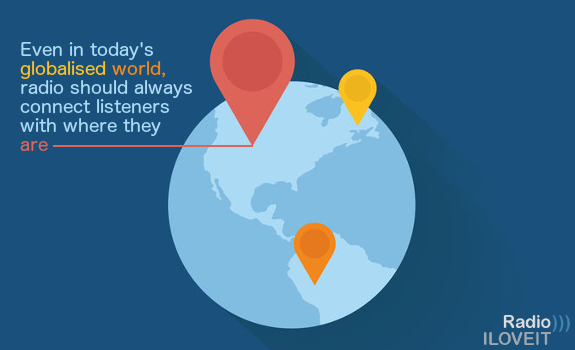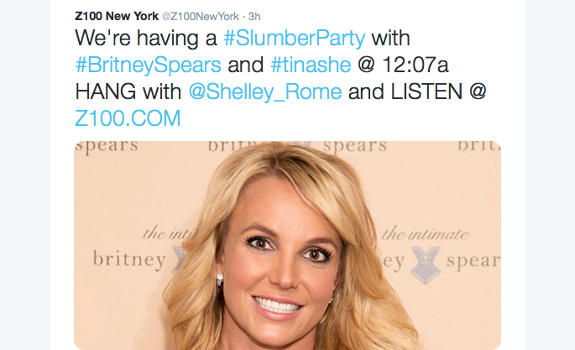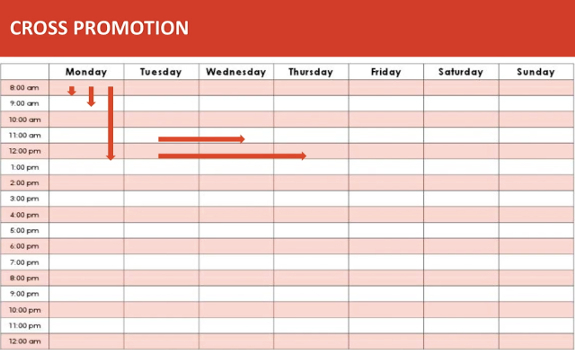How to make every hour count for your station or show? The Five Star Hour can be a useful tool, as international radio consultant Francis Currie explains in this video.
Radio personalities, producers & programmers benefit from The Five Star Hour for more engaging content on air. Designed by Francis Currie Consulting, this radio content preparation, structuring & execution (as well as evaluation) tool can be used in basically any market on any station with any format. Over to Currie for a detailed explanation in this first Ten Minute Masterclass for Radio))) ILOVEIT:
For more information, you can contact Francis Currie Consulting, or read a summary of the masterclass below:
The Five Star Hour reminds us to include personality, engagement, ‘here’, ‘now’, and cross-promotion in every hour. Below, you can find download links for the video transcript and model template, and here are the video highlights:
“Help them feel more connected”

Local connection still makes a difference (image: 123RF / Nestor David Ramos Diaz, Thomas Giger)
★ Personality
Francis Currie calls personality “an essential ingredient of most if not all radio”, referring to an individual with “a clear sense of identity” and charisma. An on-air talent should also have “a real strong sense of a one-to-one connection”, which includes addressing just one listener; not a group. Personalities should have “an individual point of view”, and be themselves. “They need to have thought about — and have an opinion about — the things they talk about.” Finally, radio personalities should make everything theirs, which includes using everyday expressions instead of formal language, and ‘telling’ instead of ‘reading’, even with service elements such as traffic or weather. “If you can be the person who can own everything, as a listener I will get a much, much stronger sense of your authentic personality.”
★ Engagement
Engagement is about connection. First of all, content should be interesting, and should connect with the audience in terms of topic and presentation. It should also be entertaining and move people emotionally. “Does it make them laugh? Does it make them cry? Does it make them care?” Last, but not least, content should be useful. A format element such as traffic information is not that exciting, but it sure is practical when you want to be in time for that meeting. Currie summarises the three elements of audience engagement with a question: “Is the presenter connecting with the listener’s head, hearts, or hand?”
★ Here
Being relevant to the listener in terms of locality is what this point is about. Even in today’s globalised world (or because of it), you want to connect your audience with where they are. Giving people a concrete sense of place can strengthen the connection between you and your listener. One of Francis Currie’s examples is that (on a local station) you could talk about a movie playing in your local cinema, rather than talking about a movie release in an abstract way, especially when that movie is not available for your audience. He adds that “it is important not to be parochial though. If you want to talk about things in other countries, you should feel free to do so. Looking from a lens from where you are — or at least from where the listener is — is an important part of ‘here’. In other words, when the presenter remembers the listener’s context, it will really help them feel more connected.”
“Telling people what they can look forward to”

Social media can help with online promotion of on-air content by making specific tune-in appointments to affect listening behaviour (images: Twitter / Z100, MUSICDAILY)
★ Now
Besides a sense of locality, radio should also have a sense of immediacy. In this social media world, it’s even more important for radio to maintain the image of being a current medium. “The radio station should feel as connected to today as it possible can”, Currie says, adding that it also applies to pre-recorded shows. “Think about the mood today; think about what people are talking and caring about today.” You always want to keep in mind the current passions and current interests of your target audience: “The more the radio station is connected with the listener – not just in general, but more specifically with what is going on today – the more powerful the radio station will be.”
★ Cross-promotion
“Most listeners miss most of what we do most of the time”, Francis Currie points out the reality that broadcasters are facing. Someone who listens to a station (so not necessarily one show) for seven hours a week will hear about 4% of the station’s total output, but won’t hear the other 96%. Hence the “fundamental function” of radio presenters to give radio audiences a reason to listen for longer and listen more often. In PPM (Portable People Meter) markets, tuning in more often becomes a very important part of building TSL (Time Spent Listening). There are several ways of making people tuning in more often and keeping them tuned in longer.
Presell in several ways
Currie suggests to use forward sells, tune-in appointments and social media to presell content. Learning from how TV is introducing a new show or Hollywood is launching a new blockbuster, “radio should become much more effective at forward-selling everything”. Specific tune-in appointments are useful. “Instead of saying: we’ll play that game later in the show, say: we’ll play that game at 8:15 this morning. So that people have a chance of actually changing their behaviour based on the information you’re giving them.” His impression is that many stations’ social feeds are “quite isolated and quite separate” from their programming. “Typically, you want to be telling people what they can look forward to on the radio, using social media to make sure that they’re able to tune in and experience it.”
“Nearly every radio station doesn’t do enough of this”

Cross-promotion can be done for both today’s and future content (image: Francis Currie Consulting)
Point in different directions
A common way in radio is vertical cross-promotion; telling listeners what’s coming up later in the hour, later in the show, or later in the day. Francis Currie encourages presenters to also promote shows and content of their colleagues; not just their own show and content, and to also use horizontal cross-promotion in addition to vertical pre-selling. “This is all about the fact that the listener who listens, for example, between 11 and 12 on a Tuesday is also likely to listen between 11 and 12 on a Wednesday. If a show is produced and prepared for the next day, then on a Tuesday the presenter can be encouraging people to listen tomorrow or indeed the day after.” He sees cross-promotion as “one of the most effective ways” to let audiences tune in more often and for a longer time. “Nearly every radio station doesn’t do enough of this.”
Download a free PDF of The Five Star Hour model
Radio))) ILOVEIT occasionally highlights products and services that could be interesting for you. When you contact Francis Currie Consulting through the affiliate links on this page, and purchase one or more of their products or services, we’ll receive a referral commission. A significant part will be invested into further development of Radio))) ILOVEIT, giving you even more inspiration & resources for creative and successful radio. Thanks for your support!
Header image: Francis Currie Consulting

![[ Video ] Ten Minute Masterclass: The Five Star Hour w/ Francis Currie](https://radioiloveit.com/wp-content/uploads/francis-currie-international-radio-consultant-2016-01.jpg)




Add Your Comment